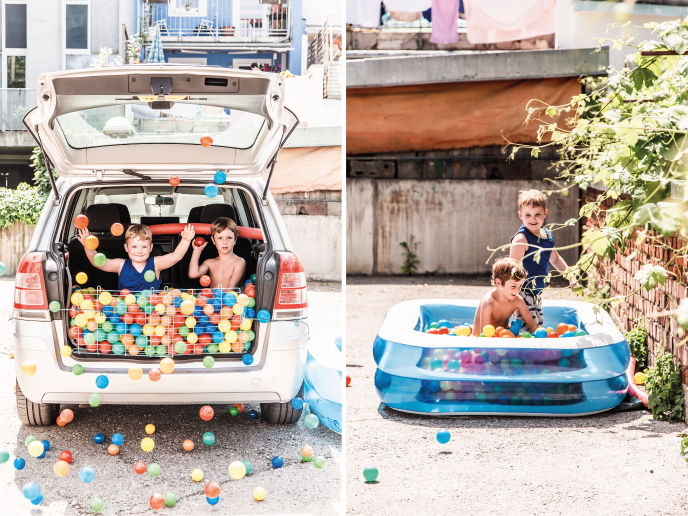Transforming neighbourhoods into child-friendly public spaces
According to the EU-funded CIVITAS Metamorphosis project, a neighbourhood full of children playing outside is a well-designed, sustainable one. As such, the project is dedicated to transforming neighbourhoods across Europe from being car-centric to child-friendly places that offer a high quality of life for all generations. “If you installed a children’s ball pool in a housing unit’s parking lot, you’d probably soon get a visit from the police,” says Karl Reiter, researcher and former CIVITAS Metamorphosis project coordinator. “However, if you put the same ball pool in the back of your parked car you would not break the law. Even though this is public space, the privilege of using it is reserved for motorists.” Within this context, the CIVITAS Metamorphosis project has worked to address the injustices found in how we use public spaces, which are currently dominated by cars. “Our goal was to create a space for people, especially children, and not for machines,” adds Reiter.
Reimagining public spaces
The CIVITAS Metamorphosis project aimed to challenge the privilege of public space and the discrimination associated with this privilege. “When it comes to the use of public space, motorists are treated more favourably for no other reason than the fact that they own a car,” explains Reiter. “This unequal distribution or discrimination has become so widely accepted that it is part of most road codes in EU countries.” The project implemented a number of initiatives aimed at highlighting the importance of granting equal use to public spaces. These initiatives included creating more than 200 temporary car-free spaces in 65 neighbourhoods across Europe, including in Graz, Munich, Merano, Zurich, Southampton, Tilburg and Alba Iulia. These initiatives, many of which were led by school children, included everything from prohibiting cars from using streets to converting parking areas into living spaces. Over 150 000 people were directly affected by the initiatives, with 30 000 actively participating in their success. “For many, these simple initiatives were a real eye opener and have inspired those involved to work to make the changes permanent,” notes Reiter. To help with these efforts, the project has developed a list of best practices for communicating about the importance of public spaces. They also published fact sheets and recommendations that urban planners can use to design child-friendly streets and for simplifying the approval procedure for creating car-free roads. All material is freely available via the project website.
In line with the Green Deal
Using the results obtained during its demonstration initiatives, the project has now set its sights on getting the EU to take action to end the discriminatory distribution of public space, particularly in densely populated urban areas. “The issue of fair use of public space is directly linked to cleaner, more active mobility and is therefore fully in line with the European Green Deal,” adds Reiter. The project worked with its partner cities in implementing measures that promote the fair use of public spaces. Researchers also talked with other cities interested in learning about how they can create liveable public spaces. “As the need for sustainable public spaces becomes more and more important, I am confident that we will soon see cities across Europe begin to adopt many of the concepts developed during the CIVITAS Metamorphosis project,” concludes Reiter.
Keywords
CIVITAS Metamorphosis, public space, cars, car-free, neighbourhood, child-friendly, Green Deal



